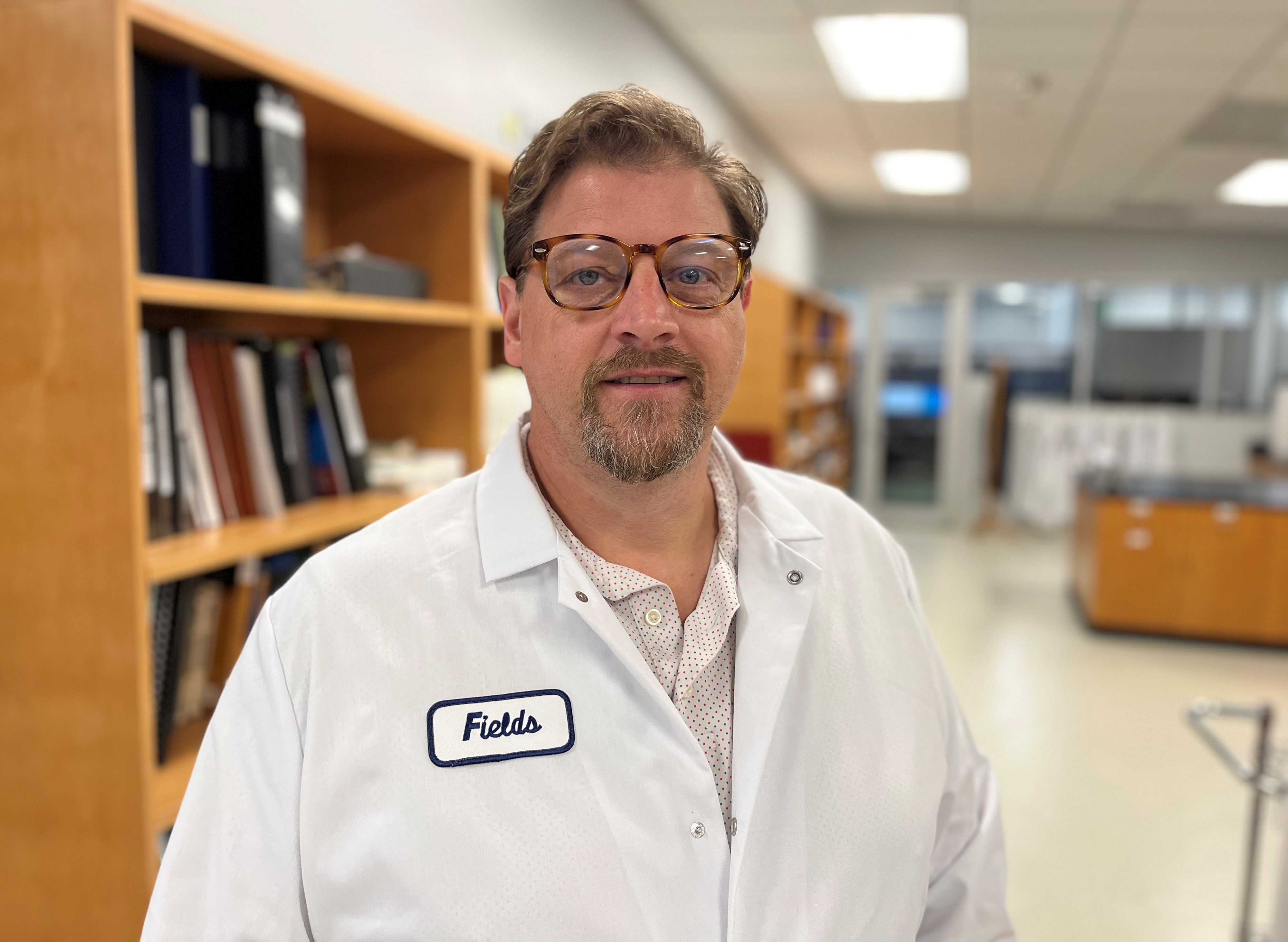Supervisor’s Prints Leave Lasting Mark At Crime Lab

#ForensicScienceWeek
The thing about getting a job is that sometimes it is more art than science, even if you have bachelor’s degree in molecular biology and a master’s degree in forensic science.
When Rob Fields was ready to be a crime scene investigator in 2006, KCPD was in hiring freeze. The crime lab in Durham, N.C., was not, and that’s how Fields ended up in the Tar Heel state.
A year later, Durham’s CSI technicians were unhappy with their shifts, so Fields was asked to call crime labs around the country to learn how they handled theirs.
“I called KCPD, and as I was hanging up, almost as a joke, I asked if they had any job openings,” Fields recalled. “’Yeah, we do,’” they said. So I asked for an application and got to come home after just a year.”
Fields loved being a CSI, applying science in the field. After eight years, he earned a promotion to supervisor. In 2019, he became supervisor of the Latent Print Section, which focuses on fingerprints. The science and biology of fingerprints, how to compare them, fascinated him.
“The way people touch things, they don’t touch things leaving nice, full, big fingerprints,” Fields said. “They leave partials. We get distorted prints.”
Primarily, Fields’ section is responsible for three things. It ensures arrested people are who they say they are. They identify bodies from the metro area. They compare prints from crime scenes in search of matches.
This work is time-consuming, much more elaborate than portrayed on TV shows.
“The job’s a lot harder than TV,” Fields said. “People have the idea fingerprints get sent off to a database, and the database comes back and tells you who the suspect is. That’s not how it works. The database sends back a list of 30 people who the database thinks it could be. All 30 of those people have to be compared to the print by a person. Every comparison, every identification is made by an examiner, a human. Then it’s sent to another analyst to verify. By the time we contact a detective or the morgue and say this is your person, two humans have made that decision. The computer does not make that decision. It sends a list. We look it up and make a decision.”
It’s skilled, rewarding work, more popular than ever thanks to television. Fields has advice for those wanting to join the profession. Get a science degree.
“So many kids today want to get a criminal justice degree for the lab, and it doesn’t work that way anymore,” Fields pointed out. “All the jobs in the lab have become so technical, you have to have a science degree.”